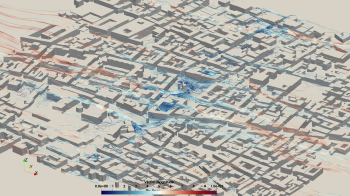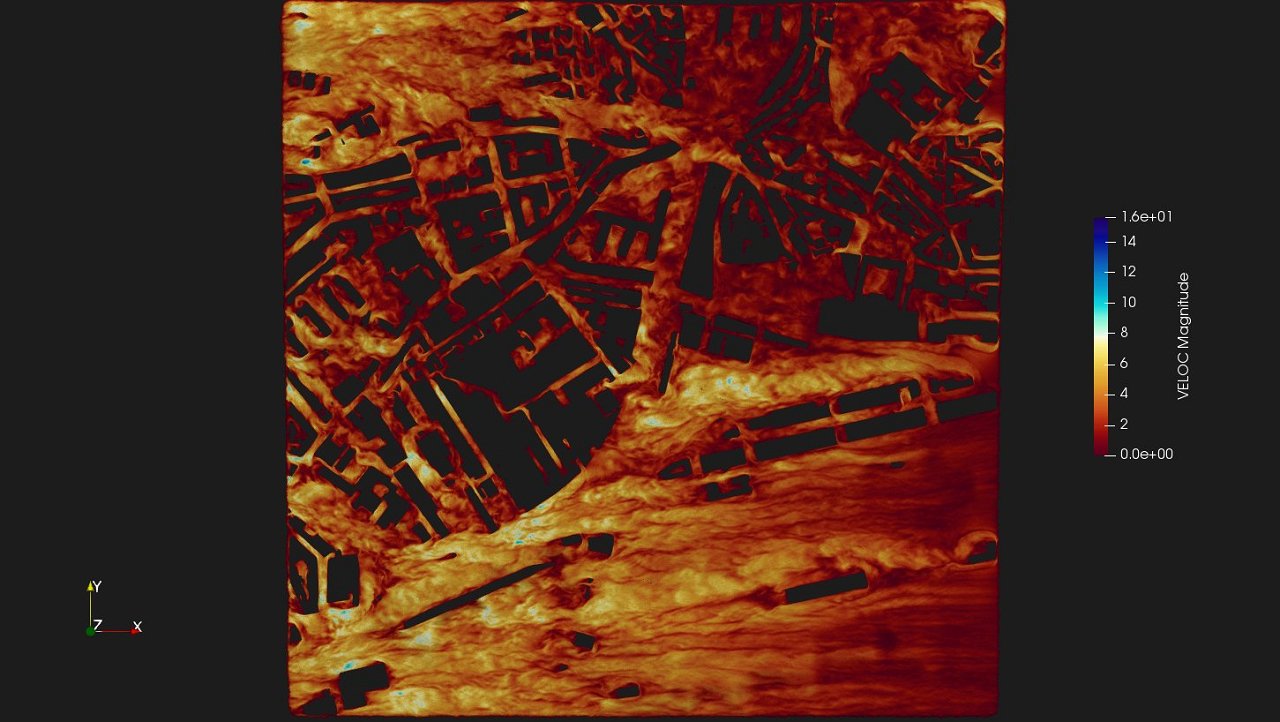Improving BettAir Maps
Presentation of the problem and objective of the experiment
Nowadays, the distribution of pollutants at street and urban level is not completely understood because the sources of the emissions of the gas concentrations may change fast at a given location and between nearby sites. In this context, HPC and Computational Fluid Dynamics (CFD) are key tools for tracking the dispersion of pollutants with high resolution. The goal of this experiment is to train Generative Adversarial Networks that mimic the output of HPC-CFD simulations at an affordable cost and to add them to Bettair’s map generation pipeline.
Short description of the experiment
A dataset of thousands of real urban configurations (building shapes and street geometry) will be created along with its micro-meteorology and dispersion patterns using CFD over HPC. These geometries will be sampled from different European cities in order to have a heterogeneous dataset. Then, generative models will be built from the CFD results for micro-meteorological variables and for the spatial distribution of pollutants, capable of generating the distribution of the dispersion variables in urban geometries. These models will compress the information contained in the CFD simulations avoiding the need for HPC, enabling the generation of affordable high-resolution heat maps, once integrated into the map generator service.
UPDATE:
Bettair Cities and the Barcelona SuperCompunting Center are working on a low-cost high-accuracy meteorological downscale to help predict the distribution of pollutants in urban environments. This new tool will overcome the need for HPC in the simulations by mimicking the wind dynamics using cGANs, a well-known predictive tool in Machine Learning. With this goal in mind, they have devoted the first months of the IBAM project to the setup of two datasets: the first one is an array of high-precision wind simulations inside different European cities that relate mesoscale meteorological conditions with the pollutant dispersion patterns within typical urban environments. This is done using ALYA, a CFD software of the BSC that runs on HPC. The second dataset comes from a measurement campaign in El Prat de Llobregat. Bettair has complemented the two already existing Air Quality reference stations of the city with seven Bettair Air Quality monitors, five 2D sonic anemometers and a 3D sonic anemometer that are scattered strategically to collect validation data in relevant locations. This data will be used to validate the performance of the trained model with real data collected throughout the whole year.

Organisations involved:
End User: BETTAIR CITIES SL
HPC Provider: Barcelona Supercomputing Center
Partner Barcelona Supercomputing Center - BSC is part of the NCC Spain.


